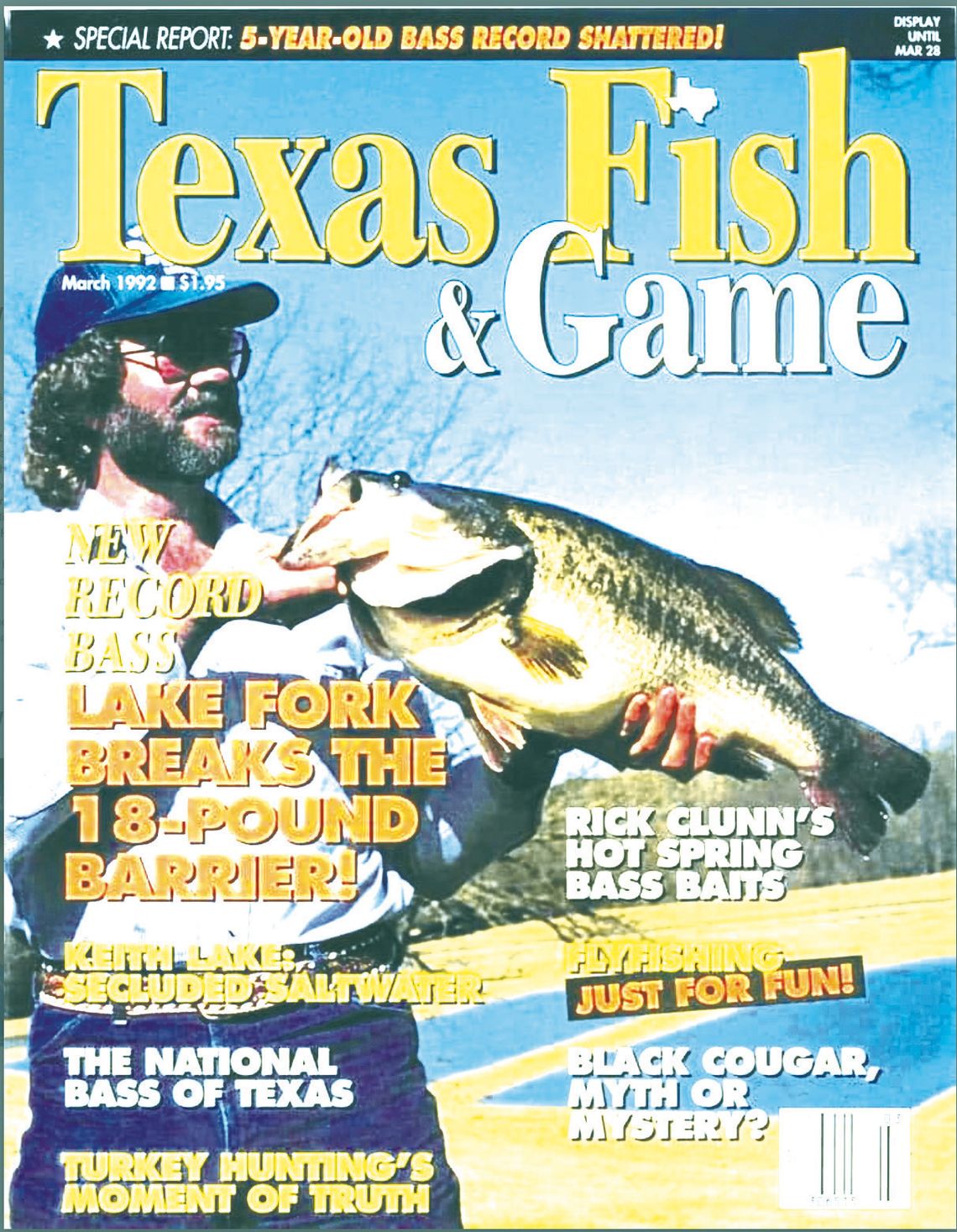It’s hard to believe, but January 24 will mark the 33rd anniversary of Texas’ state record largemouth bass.
Barry St. Clair of Athens landed the 18.18 pounder way back in 1992 at Lake Fork, a 27,000-acre reservoir near Quitman in northeast Texas. The fish topped the former record of 17.67 pounds caught in November 1986 by fishing guide Mark Stevenson, also at Lake Fork.
Interestingly, St. Clair is an avid angler who cracked to code on Texas most hallowed freshwater fishing record by complete accident. In fact, he wasn’t even fishing for bass when he reeled it in.
PLEASE LOG IN FOR PREMIUM CONTENT. Our website requires visitors to log in to view the best local news.
Not yet a subscriber? Subscribe today!




